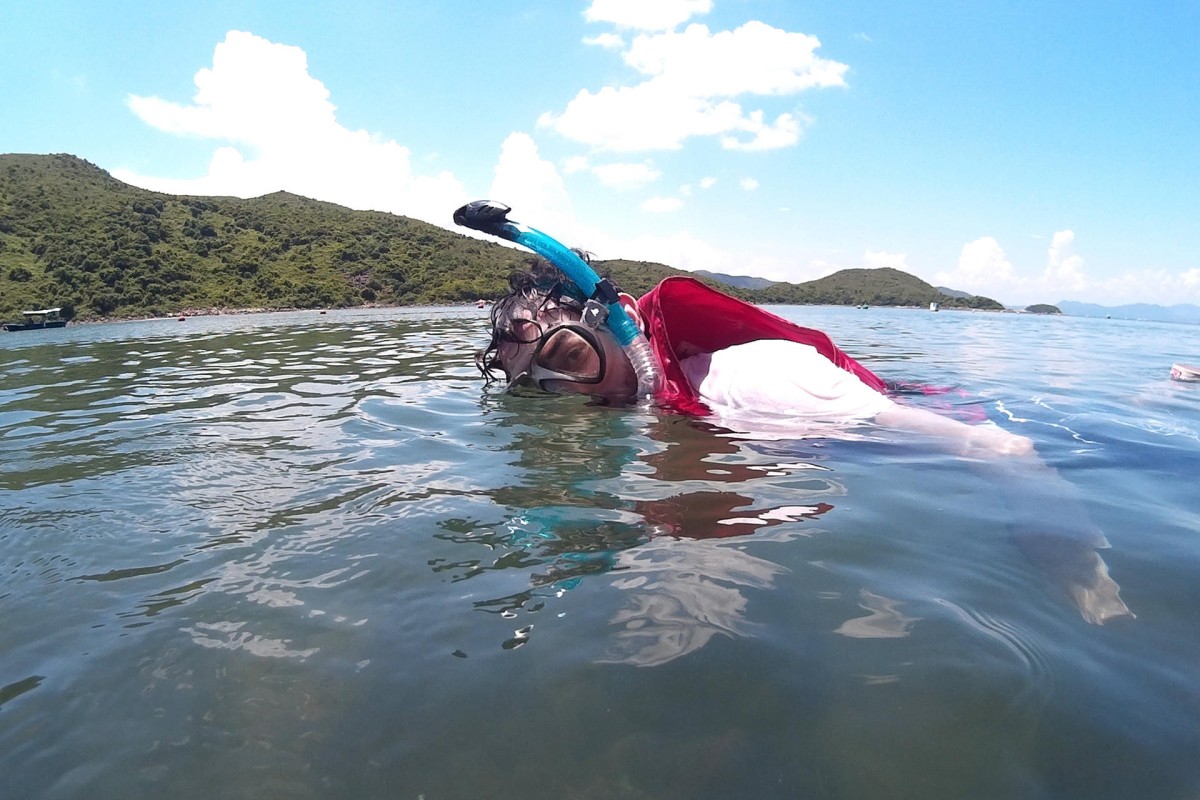 Working hard or hardly working? Sam still isn't sure
Working hard or hardly working? Sam still isn't sureI was a little nervous that this summer's Going Wild series would push me, kicking and screaming, out of my comfort zone. After all, there were some tough activities: Ariel was rock climbing under the blazing sun, and Young had to actually build a boat.
So what backbreaking sport would I be taking part in? Snorkelling. Phew.
I didn't even have to bring any snorkelling gear with me. Dan from Dragonfly took care of all that. I met up with him at the last bus stop, destination: Hoi Ha.
Dan carried a bag with all the stuff we'd need for our little aquatic adventure, and we set off. Along the way, Dan explained a few of the basics for snorkelling, most of which were simply ecological etiquette.
"You'll be seeing a lot of sea life today," he said, "but it's important that you don't touch anything. Remember, they live here."
In fact, the general rule of thumb was look, but don't touch, no matter how beautiful it is.
"Remember that everything you see here is part of the ecosystem. So even if you think, 'well, I'm just taking one seashell', if everybody did that, there would be nothing here," said Dan.
Other times though, keeping your hands to yourself is for your own good. "Those sea urchins can be pretty painful," said Dan. "Those long spikes have a bit of poison inside that can really hurt if you happen to touch them, or worse, step on them."
Shells and barnacles can also hurt our tender tootsies, so wearing shoes in the water was a must.
Dan also gave me a Personal Flotation Device (PFD) to wear while snorkelling. This allowed me to just flop on my belly and float, without having to worry about treading water or swimming.
When we reached the pier, Dan showed me how to get a nice seal around my mask. Instead of just tightening the strap and clamping it to your face, the trick is to put the mask on, and just suck in through your nose a little bit. That way, you'll get a good seal, and you won't have a red ring around your face for the next three days.
The snorkel part was easy: just put it in your mouth and breathe. There is even a little valve in it, so if water splashes in down the top, it will drain when you breathe out.
The tide was out, so instead of climbing down the ladder at the pier, we scrambled across the rocks until we were waist deep in the water. That was the most difficult part of the whole experience (and even then, it was pretty easy).
At first, there was nothing much to see, but after a few minutes, the sea life became visible. Sea cucumbers lounged on the ocean floor while schools of tiny fish darted around me. There were spiny sea urchins, and crabs came out of their hiding places to feed on the algae growing on the rocks.
Even the coral seemed to get more interesting, as more colours and varieties came into view.
Some of them were a faded blue or green. Dan told me that this was caused by bleaching. Essentially, chemicals in the water had killed the coral.
"The bleaching comes from a lot of things: soaps that run down our drains, or waste paper and toilet paper that ends up in the ocean. These are all bleached, so they leak that bleach into the water, and that kills the coral."
Thankfully, the vast majority of the coral I saw was alive and healthy, and in fact, although I spent all day in the water snorkelling, I only saw two tiny pieces of manmade trash in the water. The rest of the time, despite being a short bus ride away from the city's bank towers and skyscrapers, I was in another world. A beautiful one.
Don't forget to check out the other stories from our Going Wild series!
- Ariel comes up on top with her climbing skills
- Lucy rows with the flow with her kayak
- Heidi takes the high road canyoning in Tai Mo Shan
- John takes a walk on the wild side in Sai Kung
- Lauren rides through the wilds of Mui Wo
- Young learns survival skills to avoid a Cast Away situation
-
Melanie paddles happily on a board
